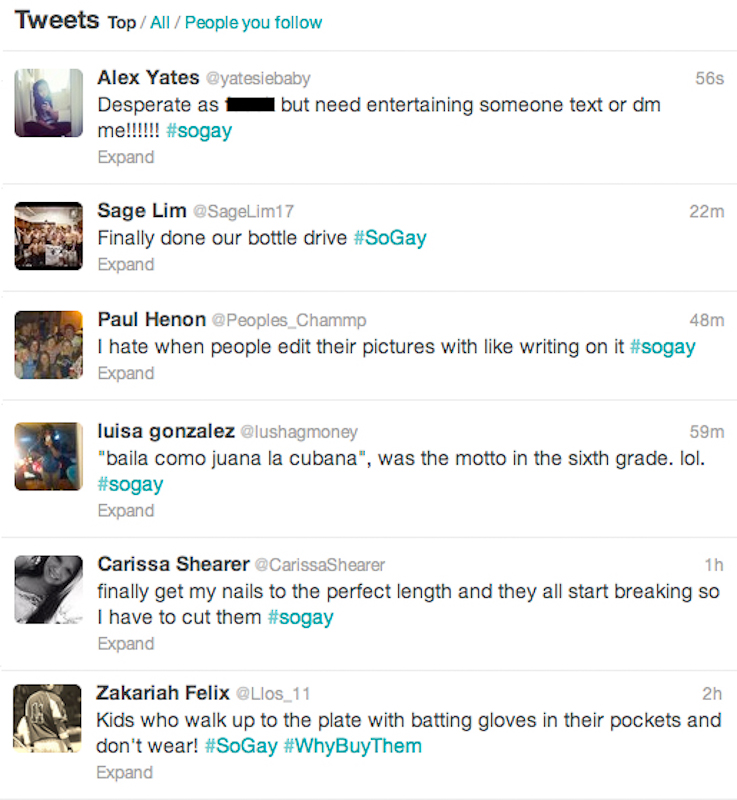
Twitter has become a place for discussion and a medium through which we can quickly share information. Twitter is also the place for casual homophobia, according to research from the website NoHomophobes.com.
The website examines tweets that contained at least one of four phrases: “faggot,” “no homo,” “so gay,” and “dyke.” The website shows a live feed of tweets using the phrases, as well as weekly and all-time tallies.
NoHomophobes.com was set in motion by Kristopher Wells, a researcher at the University of Alberta. Using a simple interface, it uses straightforward data by presenting the public with homophobic tweets that are posted in real time.
“Our primary interest [is] serving as a social mirror, reflecting back in real time,” Wells said, adding that the simplicity of the website’s design is its strength.
In 2004, Wells co-founded Camp fYrefly, a retreat intended for sexual and gender minorities, where the issue of online bullying was brought to his attention.
“We’ve heard it first-hand from the youth about the damaging impacts of casual homophobia,” Wells said.
Almost four months after the website was launched, the four phrases being monitored have been tweeted more than six million times.
“You’re disconnected when you’re online,” Wells said. “You’re not communicating with a person face-to-face, so it’s sometimes easier to throw around this kind of hateful language.”
Jenn Jefferys, a communications and women’s and gender studies student at Carleton University, shares the same opinion.
“I think that’s sort of the paradox in social networking. It brings people closer together but it alienates them as well,” Jefferys said.
“It’s like a social lubricant. Speaking to a computer screen as opposed to an actual human being,” she said.
“I find people have a bloated self-confidence and they feel like they can get away with a lot of things that they couldn’t obviously get away with in person.”
NoHomophobes.com presented compelling data for specific dates. On Aug. 22, the website indicates that the term “faggot” was used 45,236 times. The date coincides with the release of nude photos of Prince Harry.
Erica Butler, programming co-ordinator for the Carleton GLBTQ Centre for Sexual and Gender Diversity, said she supports the mission of the website.
“Casual homophobia and transphobia are still a big part of our day-to-day discourse, and when combined with the supposed “anonymity” of social media, can escalate quickly to slurs and blatant hate speech,” Butler said.
However, Butler said she feels that the website should have also looked at the “violent language surrounding trans* identities.”
“I don’t think we pay enough attention to the ‘T’ in our community acronym, and that’s something that definitely needs to change,” Butler said.
While NoHomophobes.com aims at ending casual homophobia, Wells said he hopes it will also start a public discussion on the larger issues at hand.
The website only monitors four phrases for now, but Wells said he wishes it is a starting point.
“This website is actually really all about gender and gender roles, and right now it’s this casual homophobia that’s used as the dominant weapon of sexism to regulate people back into their ‘gender boxes,’ where the masculine is always privileged over the feminine,” Wells said.
“It’s ultimately about creating a culture of respect and inclusion.”





